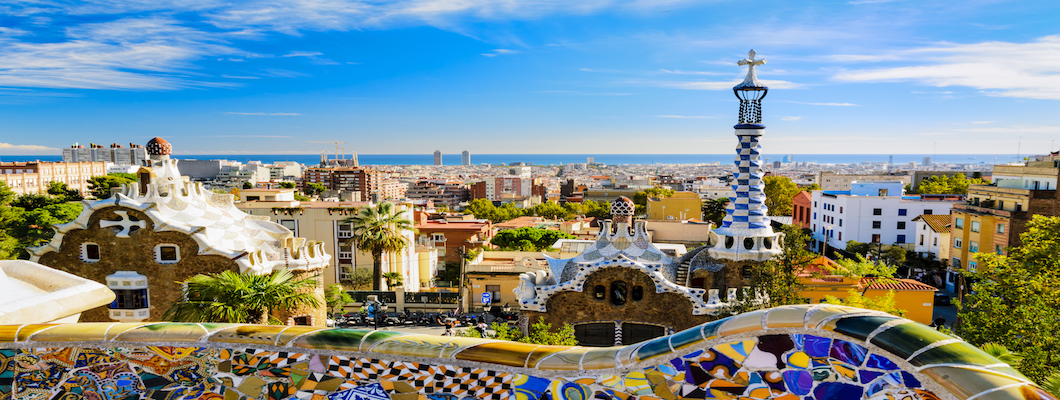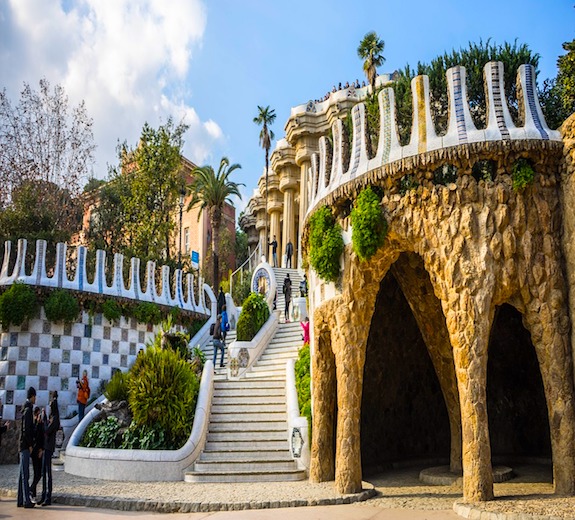The famous Parc Guell in Barcelona
Walking into a storybook is the only way to describe the Guell Park. The whimsical walkways, rooftops and sculptures make you wonder at which point would Snow White and the Seven Dwarfs make an appearance and since there is a little child in everyone, this is the ideal attraction for the entire family.
A Little History on Guell Park
Guell Park located to the north of Barcelona in Gracia was owned by Eusebi Guell and designed by Antoni Gaudi. The initial idea was to construct a residential community with 60 houses, communal gardens and parks along with some shopping and business areas which would be sold to the public.
The project began in the 1900s and ended in 1914 with only two houses along with walkways and parks. It was evident that this commercial project had failed, but because of the unusual design it remained an attraction and as such when the city took over the property in the year 1922, Guell Park became a public monument.
One of the main attractions of the park greets you upon entering and it is that of a sculpted trencadis (similar to mosaic) dragon lizard at the centre of the main staircase. Another highlight of Guell Park is the Placa Circular. The view from this plaza is absolutely spectacular, but there is also another quaint work of art associated with the Plaza and that is the Serpentine Bench which snakes its way right around the Plaza.
Visitors are always amazed at the length of the bench and it is said that it could be the longest in the world! The Sala Hipostila can be located directly under the Placa Circular. This is a hall surrounded by Eighty-Six (86) gigantic pillars which serve as a support for the Serpentine Bench.
Gaudi occupied one of the houses for over a twenty (20) year period which ended in 1926. This house is now called The Casa Museu Gaudi and functions as a museum today with some of Gaudi’s furniture on display. There are pathways throughout the park with stone pillars almost giving the appearance of tree trunks placed strategically on the sides.
These pathways are for the greater path of it undulated, since Gaudi avoided grading the land and opted to keep it as much as possible within its natural shape and form.
The architecture combined with the unusual rooftops and grounds makes a visit to the park far from boring!
Photo credit: Shutterstock Pixabay

